Diving the Banda Sea… It seems almost beyond belief that some 360 years ago, one of a cluster of ten small and very isolated volcanic islands at the remote eastern end of what was then called the Malay Archipelago, was so valuable that it was exchanged for New York’s Manhattan Island.
Those ten islands are the Bandas, and they are now part of the Indonesian province of Maluku. A group of around one thousand islands which, even today, is home to just 2 million of Indonesia’s nearly 278 million people.
Often referred to as the “spice islands”. Maluku was the source of the incredibly valuable spices that were in great demand in Europe up until the late 18th century. And the Banda Islands were the world’s only source of nutmeg and mace. Coveted commodities that commanded exorbitant prices in European markets.
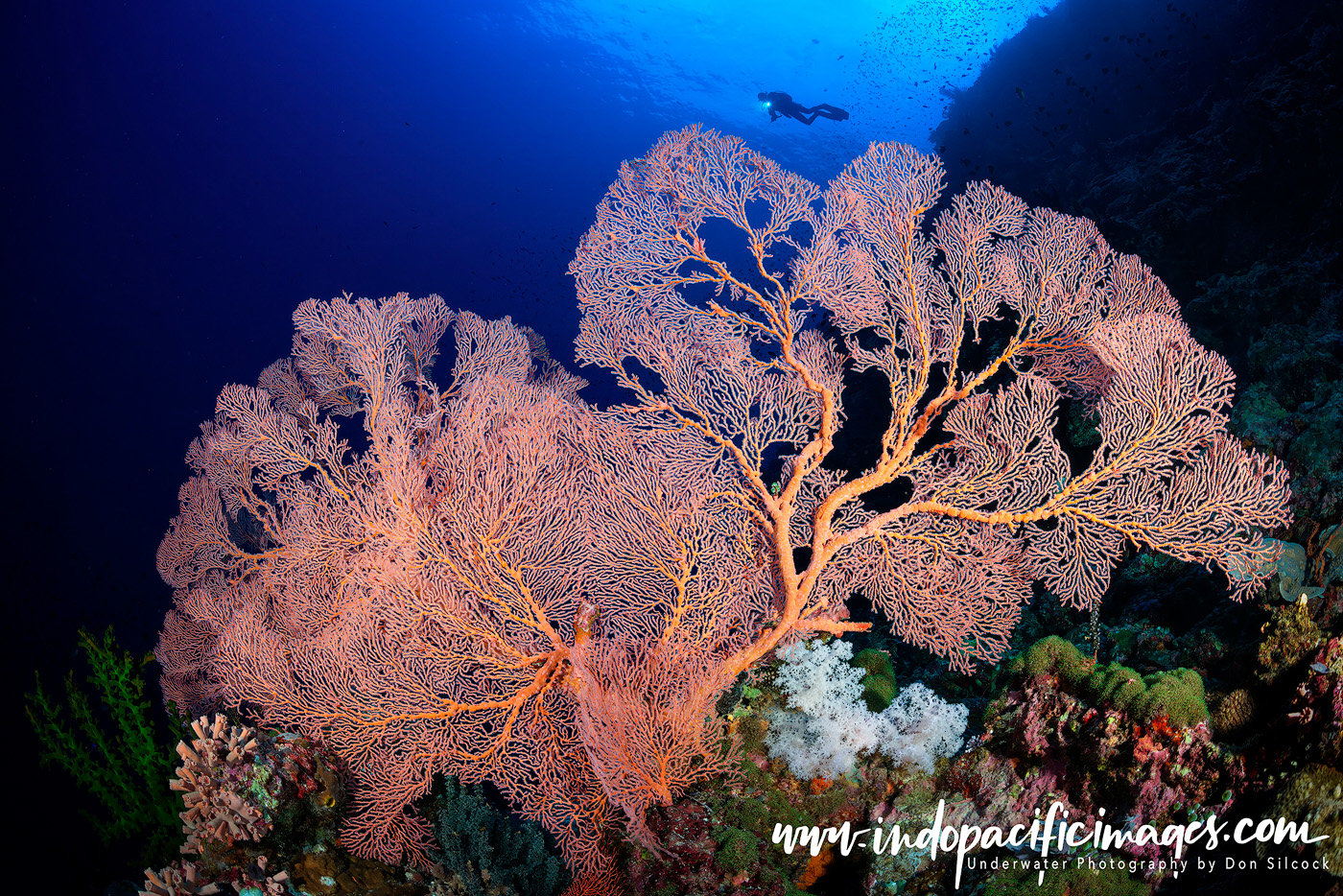
Diving the Banda Sea – A Rich History
During the Middle Ages, spices from Maluku found their way into Europe in limited quantities. Becoming highly prized by the wealthy for enhancing the flavors of poorly preserved meats. And potentially offering protection against deadly plagues.
The Republic of Venice’s dominance in the 12th century, together with its control of key Mediterranean trade routes, created a 300-year monopoly of the spice trade. Orchestrated through strategic partnerships with Arabic traders.
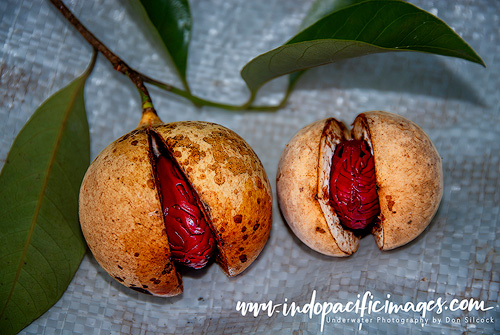
Those armed and formidable traders controlled the profitable land route across the Arabian Peninsula to the Mediterranean. Deliberately restricting the flow of spices to Venetian markets to inflate prices and profits. They also fostered an air of mystery and intrigue around the Spice Islands to deter competition.
The rise of the Ottoman Empire and the capture of Constantinople in 1453 led to the closure of the land route. Ending Venice’s monopoly, and initiating the age of exploration. Over the next two centuries, the European powers embarked on maritime expeditions in search of the sources of those spices.
With Christopher Columbus’s voyage leading to the discovery of the Americas. Ferdinand Magellan’s crew achieving the first circumnavigation of the globe. And Vasco da Gama pioneering the sea route to the Indian subcontinent by rounding the Cape of Good Hope for the first time.
Diving the Banda Sea – The Ruthless Dutch…
The Portuguese were the first to reach the Maluku and assert control of the spice trade. Leveraging the immense profits to fuel their ambitions for a global colonial empire. Then in 1599, the Dutch arrived with superior naval technology, reinforced by substantial financial backing. And in less than one year they had ruthlessly ousted the Portuguese. Seizing total control over the region and the spice trade.
The British arrived next and set up their East Indies Company. The arch-rival to the Dutch East Indies Company to try and take over the spice trade. Although both “companies” existed to make money. They were basically extensions of their governments and the result was a prolonged struggle. During which the British seized and occupied the small island of Run in the Banda Islands – renowned for its abundant nutmeg trees.
However, the Dutch had the more powerful ships and significantly outnumbered the British and in 1667 the Treaty of Breda brought an end to hostilities. So determined were the Dutch to regain control of Run and its precious nutmeg, they agreed to cede the island of New Amsterdam in the New World to the British. New Amsterdam is now known as Manhattan Island…
The Incredible Banda Sea
The Banda Sea is what oceanographers refer to as a “marginal sea” because it is partially enclosed by land but also connected to a larger ocean or sea. Marginal seas are of significant interest to marine biologists. Because they often have unique environmental conditions, biodiversity, and ecological processes compared to open ocean environments.
For example, the Red Sea, the Mediterranean, the Sea of Japan, and the Bering Sea are all marginal seas that play important roles in regional climates, biodiversity, and fisheries. The Banda Sea is particularly interesting because of its huge size. Roughly 10% bigger than the Red Sea, but much, much deeper at over 7km in places. And it is renowned for its extensive and highly diverse coral reef systems. Together with a vast array of fish species which range from colorful reef fish to large pelagic species.
It also hosts several species of marine mammals like dolphins, whales, and dugongs. Plus Sperm and Blue Whales are known to inhabit the deeper waters of the Banda Sea.
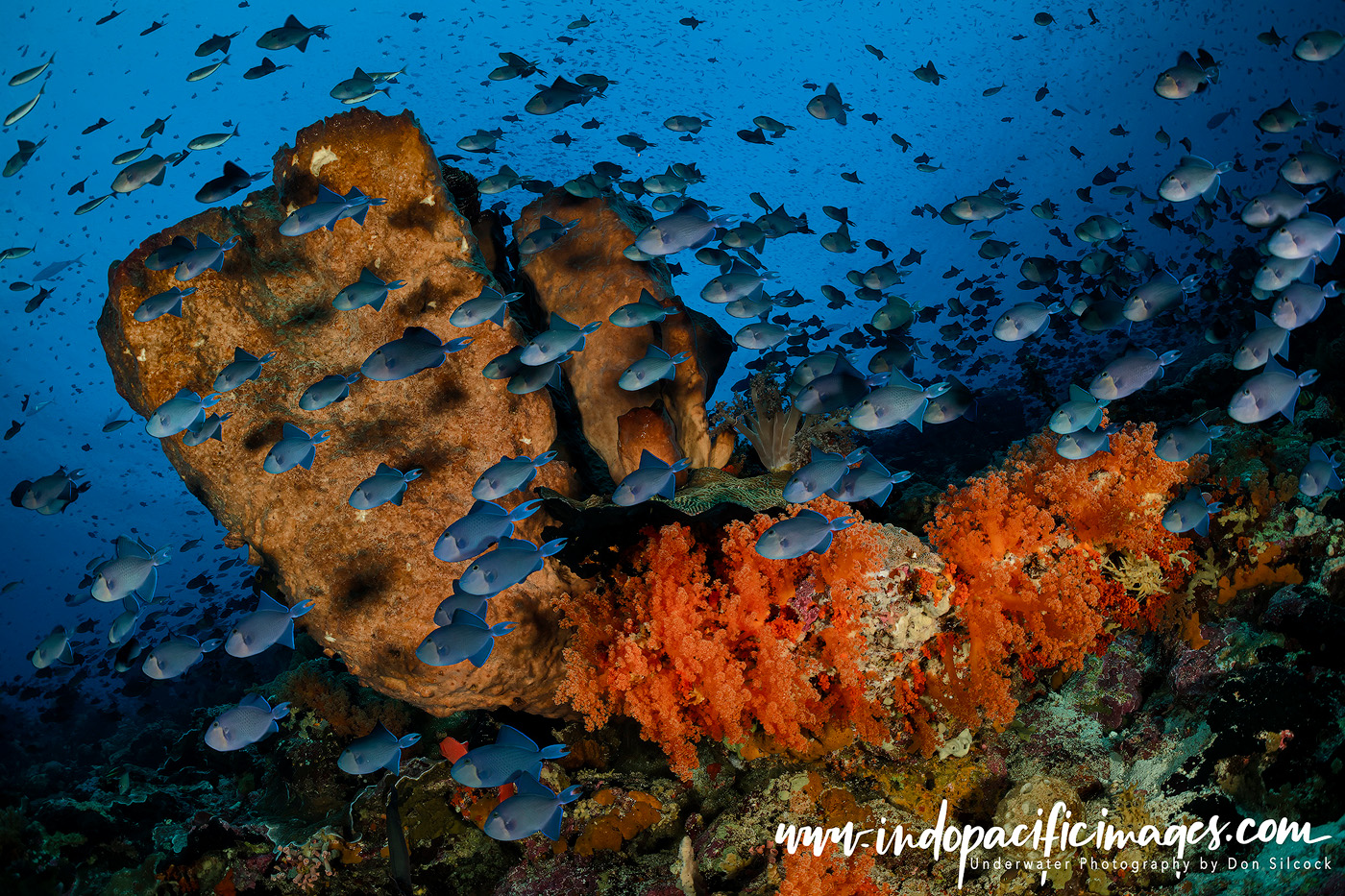
Diving the Banda Sea – Hammerheads
The chances are that if you are interested in diving the Banda Sea, then you will have heard about the Hammerhead Sharks that have become synonymous with the area.
So… let me add some perspective. Yes indeed, there are large schools of Scalloped Hammerheads, Sphyrna lewini in the Banda Sea. However these sharks are notoriously shy and difficult to approach. And personally, although I have done a total of six trips to the Banda Sea, and I have never seen a single hammerhead. But I know a lot of people who have and overall, it seems there is about a 60-70% chance of seeing them. My luck, I suppose!
The Banda Islands
This cluster of ten islands is the result of the intense volcanic activity created by the convergence and collision of tectonic plates over millions of years. The islands rise from the depths of the North Banda Basin. And are part of the Banda Arc of volcanic islands and seamounts that extends along the northern margin of the basin.
The result is an amazing combination of remoteness, photogenic scenery, and sheer fertility. All mixed in with an incredible history that really seems almost unbelievable when viewed from today’s perspective!
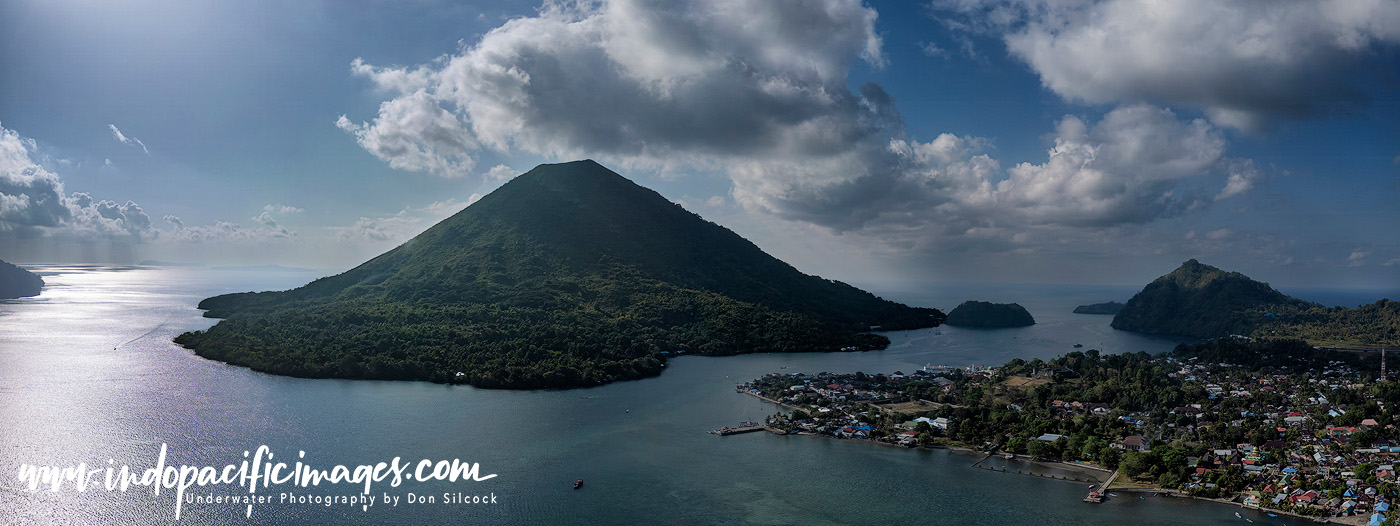
The tremendous fertility of the volcanic matter that created the islands is probably best illustrated by what is underwater at the “Lava Flows” on the southwest corner of Gunung Api. The periodically active volcano that dominates the main island of Banda Neira.
The volcano erupted last in 1988 and resulted in the evacuation of the 1800 people who lived on the flanks of the volcano. Along with almost all the 6,000 residents of Banda Neira. Molten lava flowed down the side of Gunung Api in three locations, but the worst affected was the southwest corner and the scars from that are still clearly visible to this day.
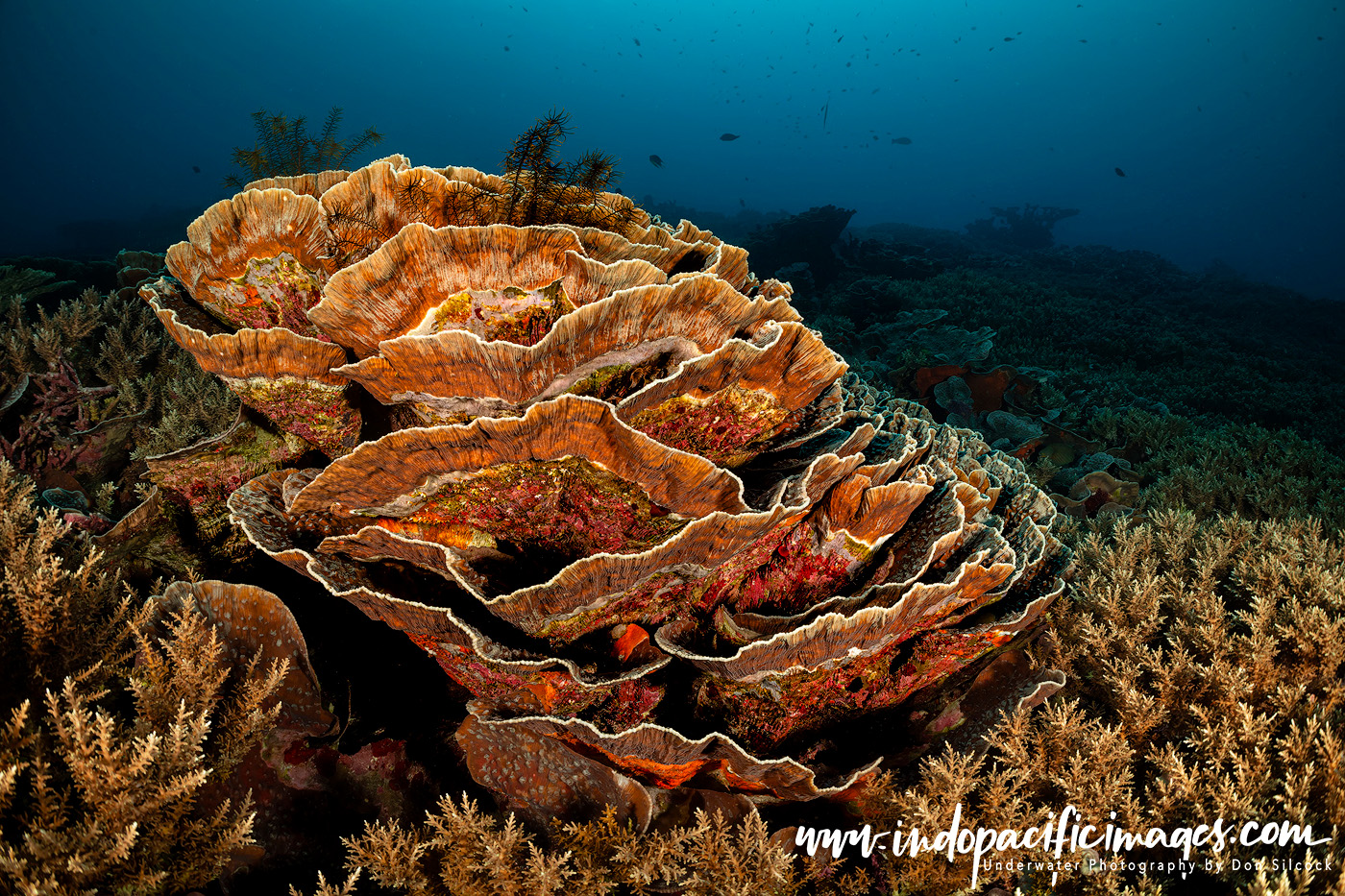
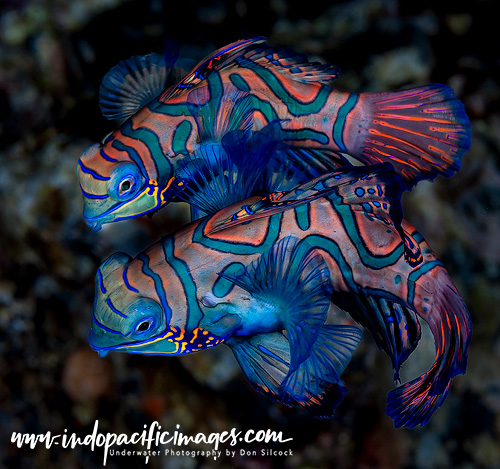 Underwater, a similar impact occurred as the lava cooled and solidified and it must have looked like Ground Zero!
Underwater, a similar impact occurred as the lava cooled and solidified and it must have looked like Ground Zero!
But 35 years on from that eruption it is hard to imagine a larger, more intense, and healthy area of hard coral than the one at the Lava Flows.
Literally everywhere you look is densely packed with beautiful cabbage and staghorn coral. And the area is a must-do dive when in Banda Neira.
The other must-do dive in Banda Neira is at dusk near the main jetty, in front of the Hotel Maulana. Where in about 7m numerous rectangular concrete posts have been dumped to reinforce the harbor wall.
Resident in among those posts is a large colony of mandarin fish. Mostly hidden during the day, as the light starts to fade pairs of these beautiful dragonets rise into the water column to mate.
It’s a spectacular display to watch and after it is over the overall area is a good night dive!
Walls, Reefs and Blue Water
There are many great dive sites in the ten islands of the Bandas. But the ones that really stand out are some of those on Hatta, Ai and Big Banda Islands. Which are characterized by stunning walls and beautiful, healthy reefs with huge barrel sponges and superb corals.
Visibility on these sites is typically at least 30m but often much more and they are a delight to dive and explore. When to dive them is very much a function of the state of the local tides and currents. Which can run very strong, but timed right there is just enough to stimulate the reef and make things interesting.
My personal favorites are the exceptional cave and swim through at Pohon Miring on Big Banda Island. And the sensational reef at Kurang Hatta on Hatta Island.
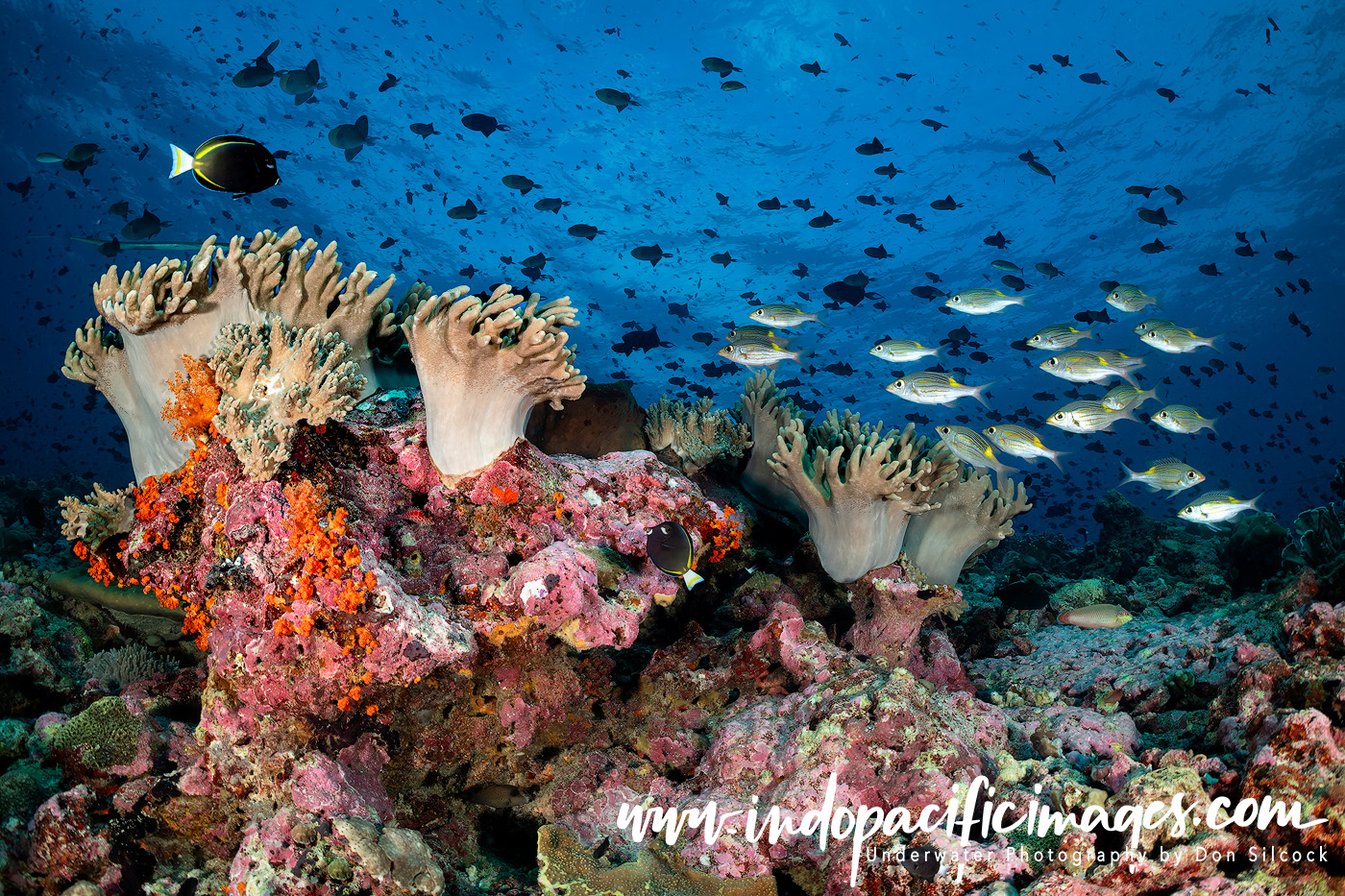
The Big Dogs – Suanggi and Manuk
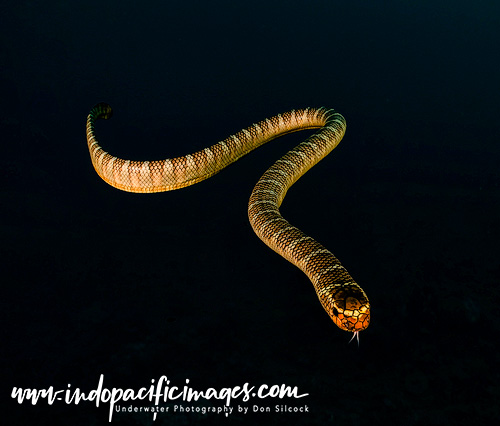 Both these sites are very much weather dependent. As they are in open water well away from the shelter of the Banda Islands. But if the weather gods are smiling down on you, they really are essential diving.
Both these sites are very much weather dependent. As they are in open water well away from the shelter of the Banda Islands. But if the weather gods are smiling down on you, they really are essential diving.
Both are the visible tips of seamounts that rise from the depths of the North Banda Basin. With Suanggi some 33km to the northwest of Banda Neira. While Manuk is 120km to the southeast.
And… if you are ever going to see those schooling Scalloped Hammerheads. It will be at Suanggi or Manuk – or maybe both…
Their isolation in such deep water means they act like beacons to large pelagic creatures like the hammerheads and Oceanic Mantas.
But if the big dogs don’t show then you can concentrate on the excellent reefs and the resident populations of banded and olive sea snakes!
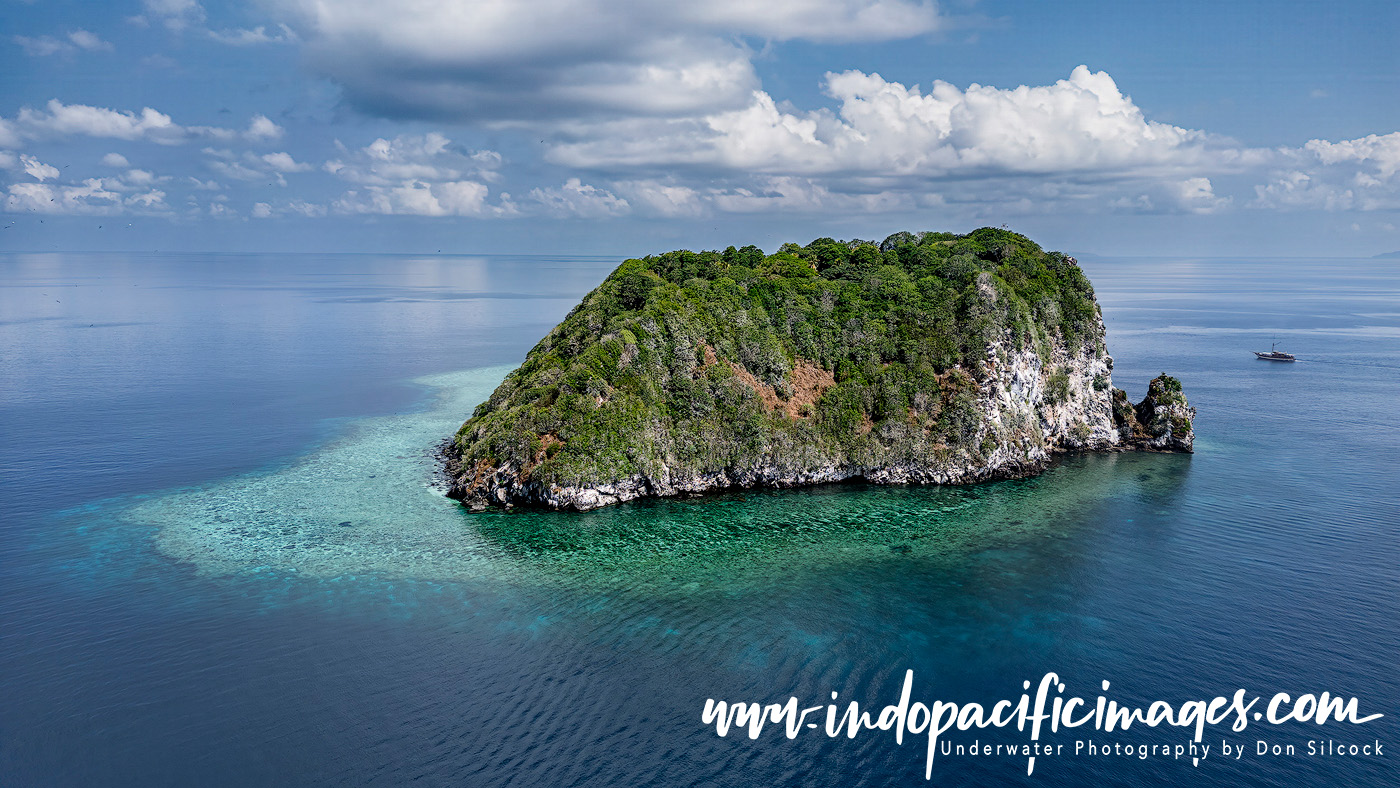
How to Dive the Banda Sea?
It is possible to dive the Banda Islands from Banda Neira as there is now a dive operation based there that is open during the season. Which means either flying from Ambon. Or, if you have an adventurous side, taking the ferry from Ambon.
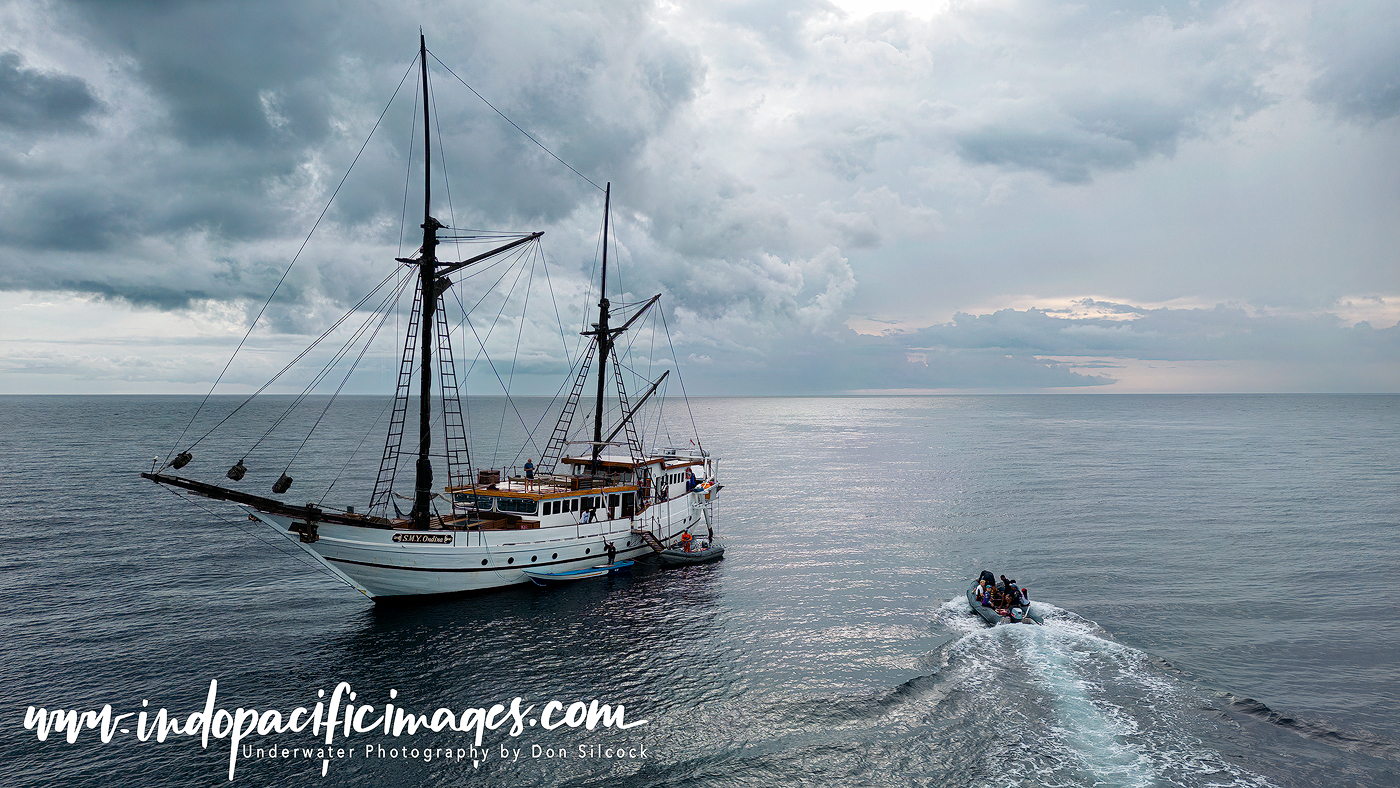
For me though a liveaboard is the much better option. And departing from Ambon will allow you to sample the excellent critter diving in the main harbour. Plus some of the superb sites like Nusa Laut on the south coast of Ambon before heading for the Banda Islands.
Physically the Bandas are located some 250km south-east of Ambon and it’s typically an overnight sail to get to Banda Neira. And, once there, the other big advantage of a liveaboard becomes obvious. As the best sites for the prevailing weather can easily be dived and access to Manuk and Suanggi is relatively easy and safe.
The alternative to Ambon is sailing across the Banda Sea from Maumere. Or one of the other main ports in the Lesser Sunda islands, which form the southern boundary of the Indonesian Archipelago.
That means a long journey of over 1000km. Through a lot of open water, with almost nowhere to shelter should the weather turn nasty.
When to Dive the Banda Sea
If there is one logistical detail you really need to know about diving the Banda Sea, it’s when to do it. Because like much of Southeast Asia, the area has a monsoonal weather pattern with two distinct seasons.
From around December through to March is the northwest monsoon. When the prevailing winds bring relatively dry conditions to the Banda Sea region. While from June to September is the southeast monsoon. Which brings stronger winds and rougher seas. In between are the so-called “doldrums”. The transitional periods between monsoon seasons when conditions can vary.
Overall though, October to March is the season to dive the Banda Sea. With late November through to the end of February being the optimum months. With great conditions and the best chances of seeing those hammerheads…
Diving the Banda Sea – In Summary…
The Banda Sea is an intriguing location. One that offers a quite different experience to the other major Indonesian dive locations like Raja Ampat or Komodo. It has an amazing variety of things to see and the overall setting is simply incredible. It’s almost worth a trip there just to see and appreciate the history of the Banda Islands.
My most recent trip was my sixth and I hope to be going back soon to search for Blue Whales and Sperm Whales. But that’s for another article…
Scuba Diver Article
Scuba Diver ANZ recently published a five-page article of mine on Diving the Banda Sea and you can use the link to download a copy.

